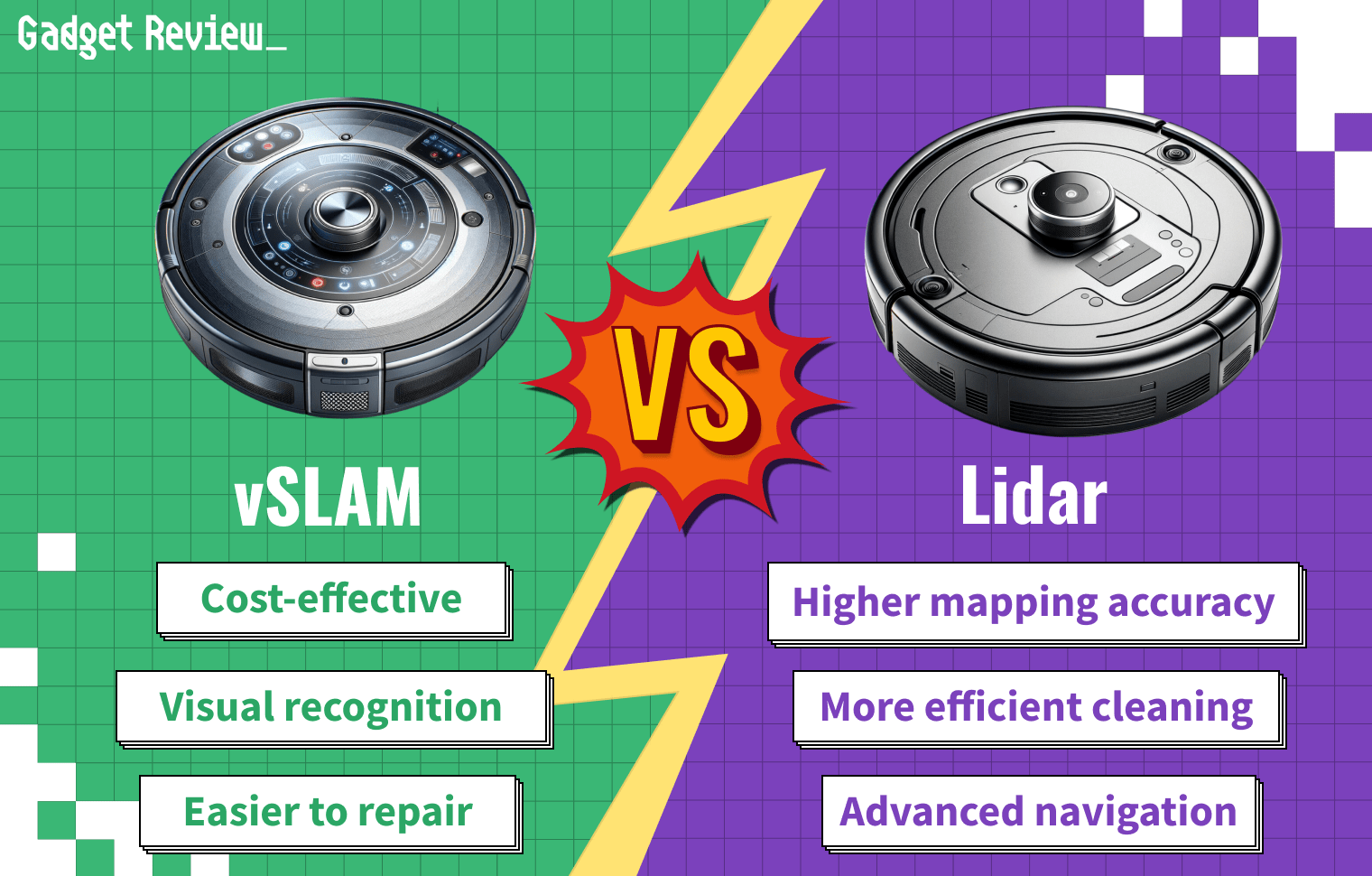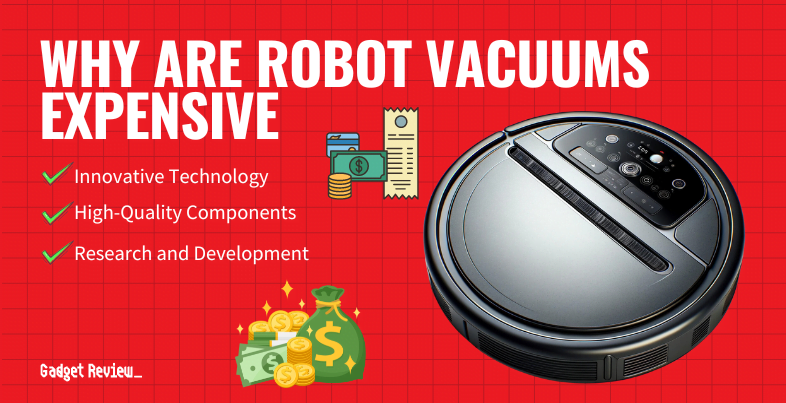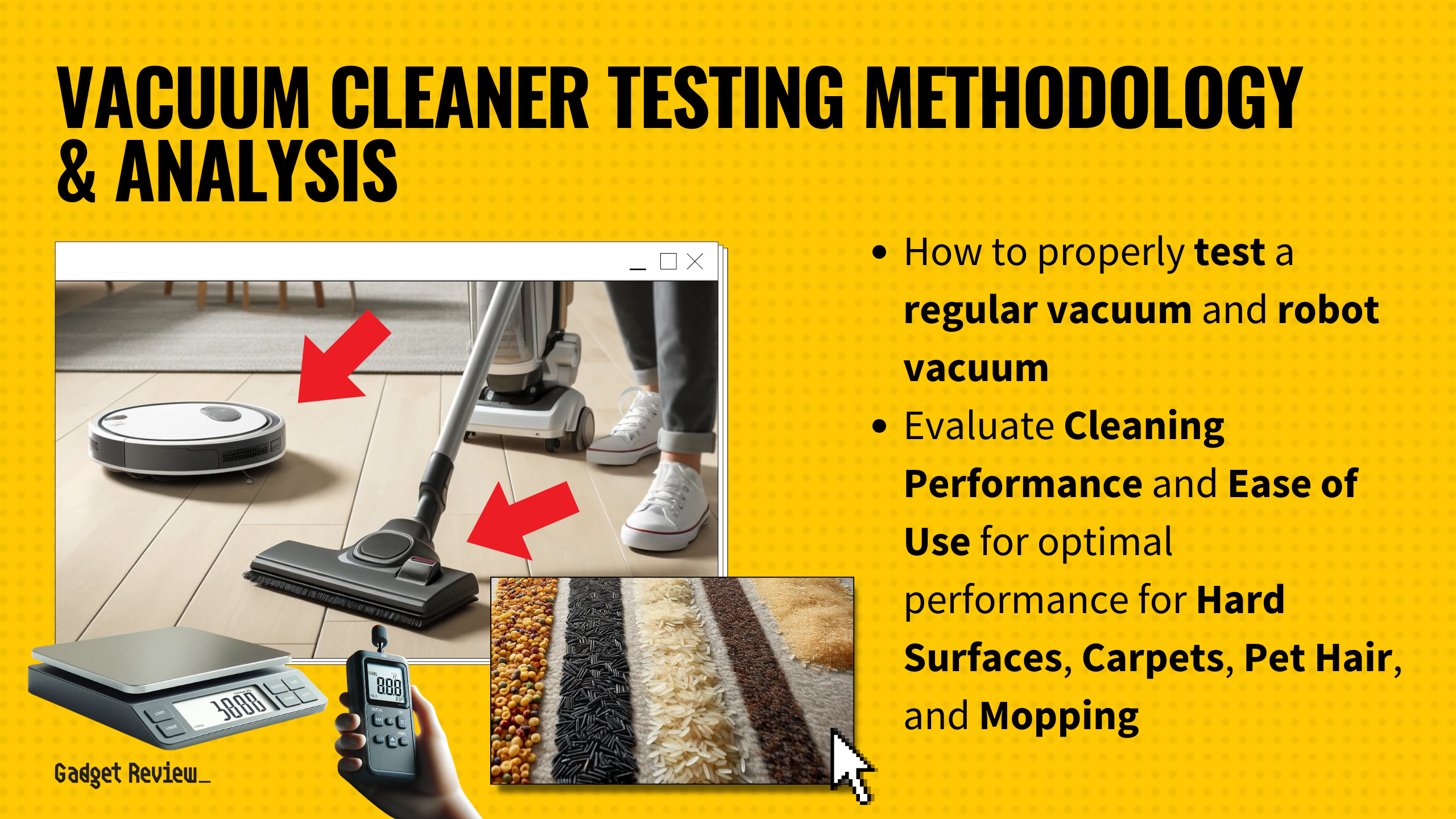If you’re shopping for a premium vacuum cleaner, you should compare Roomba to other brands regarding motion sensors. You can learn the navigation methods that top-tier robot vacuums offer by comparing lidar and visual SLAM technology. Picking the right tech for your robot vacuum ensures an efficient navigation path around your household. Stick around to learn if vSLAM vs Lidar is the best for you.
Key Takeaways_
- vSLAM robot vacuums use cameras and algorithms to scan a room and navigate the space.
- Lidar-based robot vacuums use lasers to build an accurate map of your room and avoid obstructions.
- vSLAM robot vacuums are cheaper than models with laser navigation systems and are easier to repair.
Robot Vacuums: Lidar vs Camera
Convenience is a major factor in the robot vacuum vs. regular vacuum debate, and mobile robot vacuums offer near-effortless cleaning and smart navigation.

Lidar stands for light detection and ranging, and it is a laser navigation system. Robot vacuums with laser sensors use a light-sensor point cloud to map a room and boundaries.
A Lidar robot vacuum disperses a cloud of infrared lights and measures the exact distance from objects by timing how long it takes for the light to bounce back.
The Lidar system’s accuracy is further enhanced by its ability to process these pulses of light in real-time, ensuring precise position and mapping of indoor spaces.
vSLAM (visual simultaneous localization and mapping) uses optical sensors to scan your room’s ceiling and furniture within view.
Additionally, vSLAM vacuums use algorithms for object detection and room mapping. The visual SLAM algorithms develop accurate maps of your space, creating virtual boundaries.
These visual sensors capture images that are crucial for the vSLAM system’s application in indoor navigation, allowing the robot to recognize and adapt to its environment.
Accurate Navigation
Lidar-based robot vacuums offer a higher level of accuracy compared to vSLAM models. Thanks to the light sensors, Lidar models can map and clean dark areas.

Due to their reliance on cameras, VSLAM models often lose accurate localization in dark rooms and aren’t great for cleaning during nighttime.
Incorporating bump sensors and cliff sensors, robot vacuums can safely navigate around obstacles and avoid falls, enhancing their efficiency and safety. These sensors are also how robot vacuums find their charger.
insider tip
Ensure your robotic vacuum cleaner has smart navigation and cleaning schedules for maximum convenience.
To minimize errors in navigation, Lidar vacuums use optimization techniques that refine the data collected from multiple nodes, ensuring reliable performances even in complex environments.
Efficient Cleaning Technology
Thanks to their accurate measurements, Lidar robot vacuums deliver more efficient cleaning cycles than vSLAM models. Lidar models are less likely to bump into furniture and map indoor environments faster than vSLAM vacuums.
warning
Pick up clutter from your floors, or your robot vacuum will have near-random path navigation, taking longer to clean your home.
The primary sensors in Lidar vacuums, combined with advanced odometry, ensure precise tracking of the vacuum’s position, optimizing its cleaning path for maximum efficiency.
Affordable Model
VSLAM robot vacuums use less expensive equipment than a Lidar-based model due to their reliance on cameras instead of lasers. Additionally, vSLAM-based models are generally easier to repair thanks to the simpler components compared to Lidar robot vacuums.
STAT: A 2019 Statista poll showed that more than 14.2 million households owned a robot vacuum, an increase of 1.2 million over polling from 2017. (source)
However, the cost-effectiveness of vSLAM models also depends on the platform and processing capabilities required to interpret the visual data effectively.
Regardless of the type of cleaner you get, properly maintaining it is crucial in how long your robot vacuum lasts.
Safety
While Lidar robot vacuums offer more accurate room scans than vSLAM models, both are a safe choice for your home and furniture. Each option features alternative sensors to prevent falls or bumps into furniture like coffee tables and chairs.
Moreover, the integration of various kinds of sensors, such as battery sensors and carpet sensors, ensures that the robot vacuums can adapt to different floor types and maintain performance while conserving energy.


























